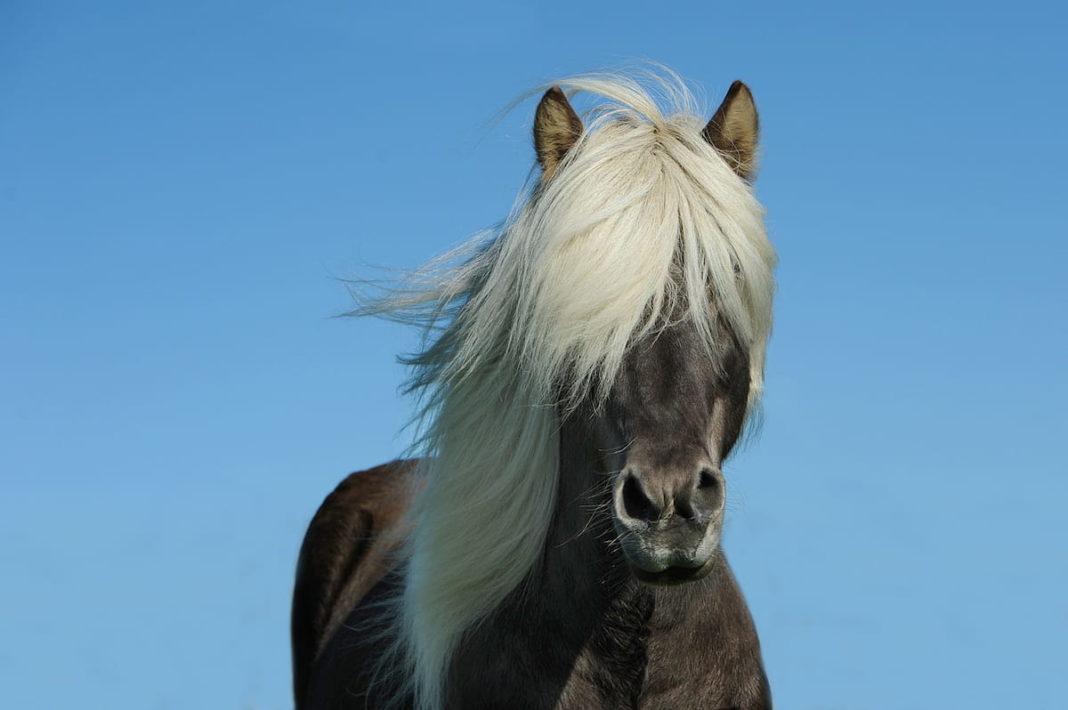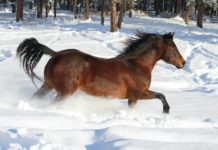Alfalfa cubes are used effectively as a source of roughage for all breeds of horses. Because of the high nutrient values for energy, protein, calcium, and vitamins, alfalfa cubes are very effective in feeding programs used for broodmares and young growing horses. Additionally, alfalfa cubes may be used for horses that have respiratory problems as horse owners feed alfalfa cubes to reduce the horses’ exposure to mold and dust. With all horses, and especially the mature horse at maintenance, controlling the daily intake of alfalfa cubes is extremely important, as overfeeding could become a problem.
Forage cubes are a popular alternative to feeding long-stem hay. Alfalfa cubes come available in 100% alfalfa, a mixture of alfalfa and grass, or a mixture of alfalfa and whole corn plant. As with any feedstuff, there are advantages and disadvantages that need to be considered when deciding to use alfalfa cubes in your horses feeding programs.
How Much Alfalfa Cubes To Feed A Horse?
Researchers have found alfalfa cubes to be an effective forage component in a horse’s diet. Although it’s important to know that alfalfa cubes must be limit-fed, as voluntary intake is much greater compared to feeding long-stem alfalfa hay. Horses fed to appetite consumed up to 25% more cubed alfalfa compared to long-stem hay.
Horses that are fed alfalfa cubes typically eat all the cubes given, whereas a horse that’s fed long-stem alfalfa hay will sort through the hay and not eat all the hay offered. Research shows that mature horses fed alfalfa cubes maintained their bodyweight better compared to horses fed equal amounts of long-stem hay. Researchers found that horses that were fed cubed alfalfa ate all the feed provided, while the horses fed the long-stem hay wasted a higher portion of the feed given. Therefore, when horse owners are providing alfalfa cubes, it should be in a controlled manner to prevent overconsumption of the feed, which may lead to serious digestive problems such as colic or problems associated with overweight horses.
Alfalfa cubes can be used in a horses diet to replace a portion or all of the forage that horse owners would feed their horses. Recommended Feeding suggestions for feeding alfalfa cubes are found below.
The feeding suggestions provided are to be used as guidelines for feeding alfalfa cubes. You should always be monitoring your horse’s body condition and adjust the rations if needed.
- Mature horses at maintenance that weigh 500kg to 1100lb can be fed 17-18 lb per horse per day – Free choice
- A Broodmare that’s in the 10th Month of Gestation that weight 500kg to 1100lb can be fed 15lb per horse per day
- A Mature Horse at Light Work that weighs 500kg to 1100lb can be fed 16lb per horse per day. Light work is considered to be activities such as Western and English Pleasure or Equitation riding.
The Advantages And Disadvantages Of Alfalfa Cubes
Advantages
Reduced feed waste: Alfalfa cubes aren’t wasted to the same extent as long-stem hay even if when fed on the ground. Horses fed long-stem hay can separate the stems from the leaves, only consuming the parts that they prefer; this doesn’t happen with cubes.
Controlled feed intake: It’s easier for horse owners to monitor and regulate the daily intake of cubed forage taken by their horses than long-stem hay.
Consistent nutrient content: The nutrient levels found in alfalfa cubes tend to be more consistent than normal hay. Alfalfa cubes are typically sold with a guaranteed minimum nutrient content.
Reduced dust: Alfalfa cubes have less dust and therefore a far better alternative to hay for horses with certain respiratory problems.
Ease of handling: It’s easy for alfalfa cubes to be mechanically handled in bulk.
Reduced storage requirements: alfalfa cubes are denser than hay and therefore require far less storage space.
Reduced transportation costs: As alfalfa cubes are denser than hay, it allows trucks to be loaded to their full legal capacity. This is not always possible when transporting normal hay. As a result, the shipping costs for alfalfa cubes can be reduced, assuming the shipping distance is the same.
Easier to transport: As alfalfa cubes take up less space in trailers, it can be easier for horse owners to take alfalfa cubes to shows or on trail rides.
Disadvantages
Excessive feed intakes: Cubes should always be fed in a controlled manner to avoid overweight horses and to avoid serious digestive upsets.
Handling: Alfalfa cubes require an area for storage that provides good protection from the weather to prevent spoilage caused by excessive moisture.
Cost: The cost of the processing of the feed is higher. There may also be additional costs that are associated with shipping, depending on the distance from the production point of sale.
What Are Alfalfa Cubes And How Are They Made?
In general, there are two types of alfalfa cube dehydrated or sun-cured. Dehydrated cubes are made from alfalfa and are cut at an early stage of maturity and are partially dried in the field. The wilted alfalfa is picked and chopped with a forage harvester. This material is transported to the processing plant where it’s dehydrated to 95% dry matter and cubed.
The sun-cured alfalfa cubes are produced by allowing the alfalfa to dry in the field. The cured forage is then baled then transported to the processing plant, where it is chopped and cubed. The result of either type of cubes is the processing method is alfalfa forage in a small package.
Alfalfa cubes are similar to the normal long-stem hay and still provide digestible energy, crude protein, and calcium content. The use of alfalfa cubes eliminates the sorting of leaves from stems. As a result, the cubed product provides a more uniform feed. Someone that’s buying alfalfa cubes always has nutrient information provided, and the sold product has a nutrient guarantee. In most situations, when long-stem hay is purchased, the horse owner may have to test the quality of hay to determine the nutrient content.




